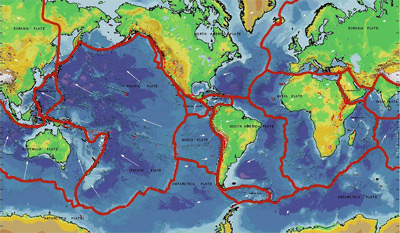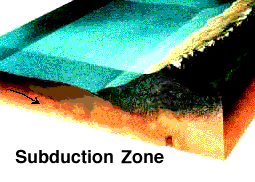
Windows Original after Northcott
How Do Plates Move?
Plates at our planet’s surface move because of the intense heat in the Earth’s core that causes molten rock in the mantle layer to move. It moves in a pattern called a convection cell that forms when warm material rises, cools, and eventually sink down. As the cooled material sinks down, it is warmed and rises again.
Scientists once thought that Earth’s plates just surfed on top of the mantle’s giant convection cells, but now scientists believe that plates help themselves move instead of just surfing along. Just like convection cells, plates have warmer, thinner parts that are more likely to rise, and colder, denser parts that are more likely to sink.
New parts of a plate rise because they are warm and the plate is thin. As hot magma rises to the surface at spreading ridges and forms new crust, the new crust pushes the rest of a plate out of its way. This is called ridge push.
Old parts of a plate are likely to sink down into the mantle at subduction zones because they are colder and thicker than the warm mantle material underneath them. This is called slab pull.









